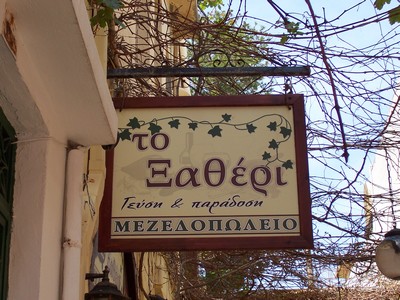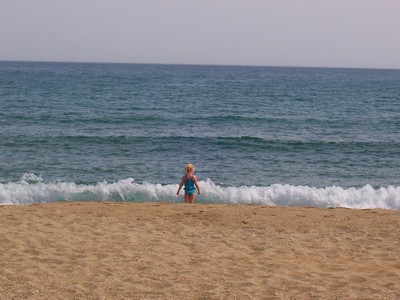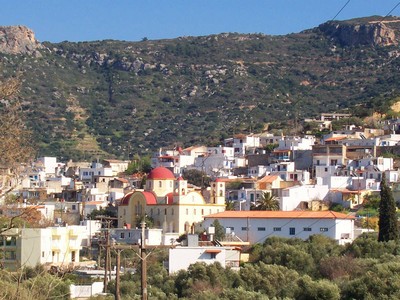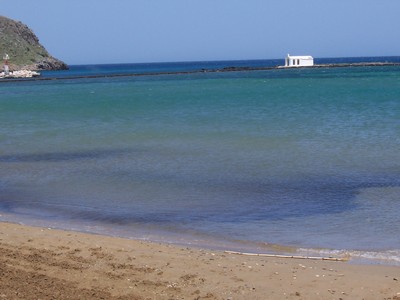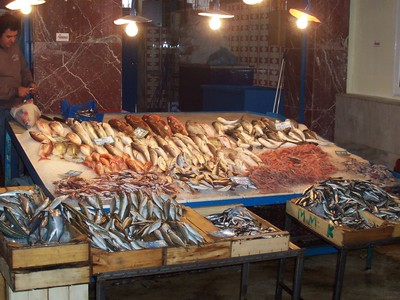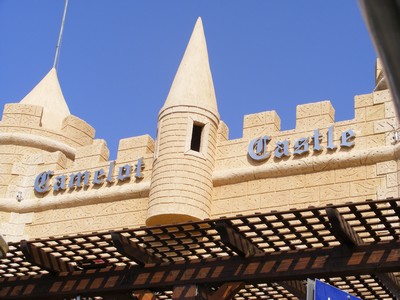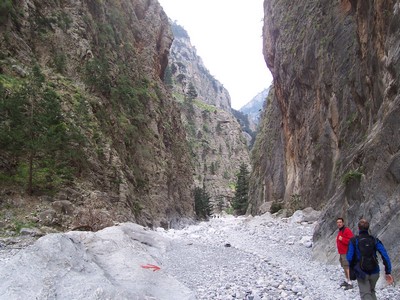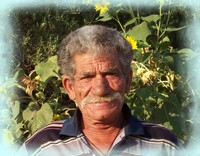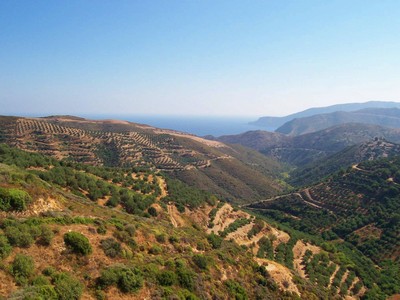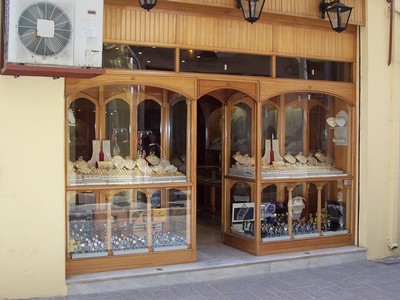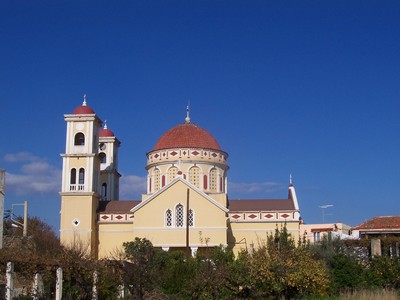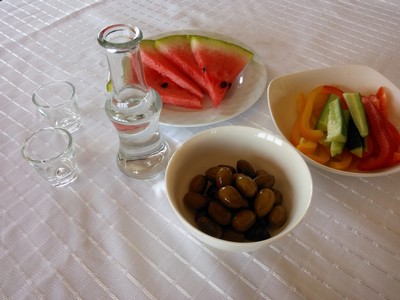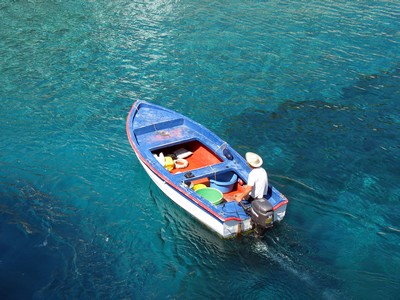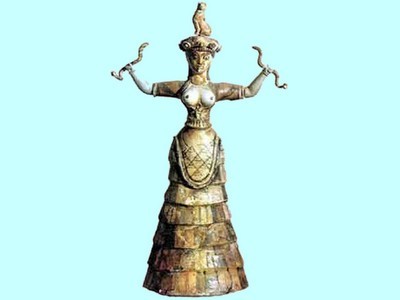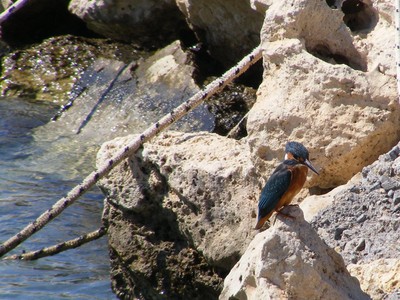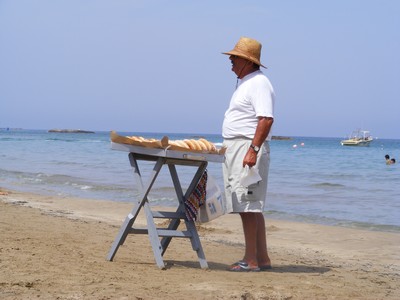Crazy about the Greek island of Crete!
All About Cats in Crete

In this guide, All About Cats in Crete, we will provide some of the most iconic images of Greece and Greek Island life.
Whole calendars are devoted to them, and you can see prints, photographs and paintings depicting felines of all shapes and sizes, cleverly composed against backgrounds of brightly coloured doors, windows and flower pots, or in the arms of children.
Many people see them as a problem though. Some holiday makers can be irritated by begging cats at tavernas. While some are happy to feed them with scraps from their meal, not always discouraged by the waiters and restaurant owners, not everyone appreciates their habits.
Most feral cats in Crete are not vaccinated or spayed which means that reproduction goes unchecked. There's no doubt that many animals suffer as a result.
You can always identify a spayed cat, as they have a noticeable nick out of one of their ears.
All About Cats in Crete:
The 3 Types
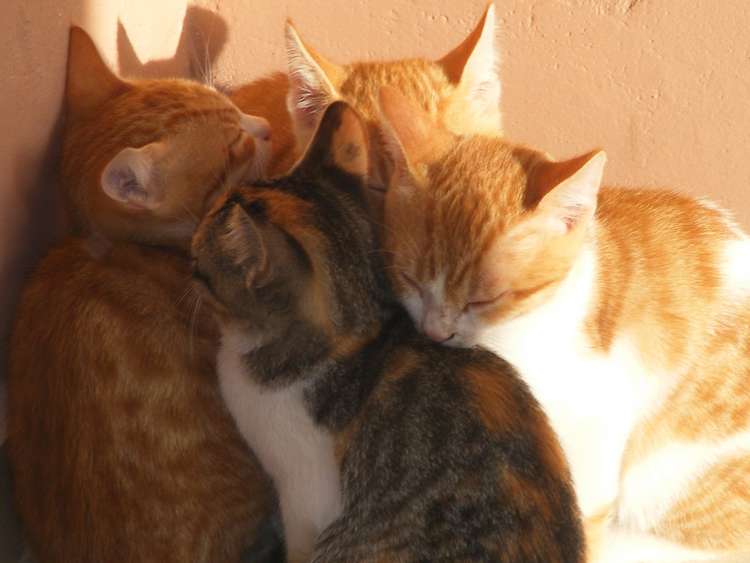
There are broadly 3 types of cat in Crete.
- First, you get the
wild cat, characterised by their unkempt appearance and skinny frame.
You can see them skulking on the outskirts of villa complexes, old ruins
and the edges of beaches.
- Next come the semi-domestics. These cats are generally well
groomed and quite healthy looking. They look like normal pet cats, but
are uncomfortable indoors. These cats will pester holidaymakers and
ex-pats in their apartments and at the restaurants, always receiving
attention because of their good looks and dashing enterprise.
- Next come the true pet cat. Usually brought from overseas by an ex-pat, or a kitten "rescued" from the wild. This (usually fat) cat is rarely seen of course, because a cherished feline companion would always be protected from outside dangers by being confined to the house, apartment, or villa - at all times.
The semi-domestic cat can be a nuisance, particularly because they are quite bold, and will think nothing of begging off unsuspecting holidaymakers and exasperated ex-pats for food. Invariably they will not be neutered, and the sight of tiny kittens scurrying around the neighbourhood in not uncommon.
This type of cat is cute and appealing of course, and this is why the holidaymaker and ex-pat will feed them. Rich taverna food produces a vigorous and fertile cat, and this will produce more kittens.
Living in Crete with Cats
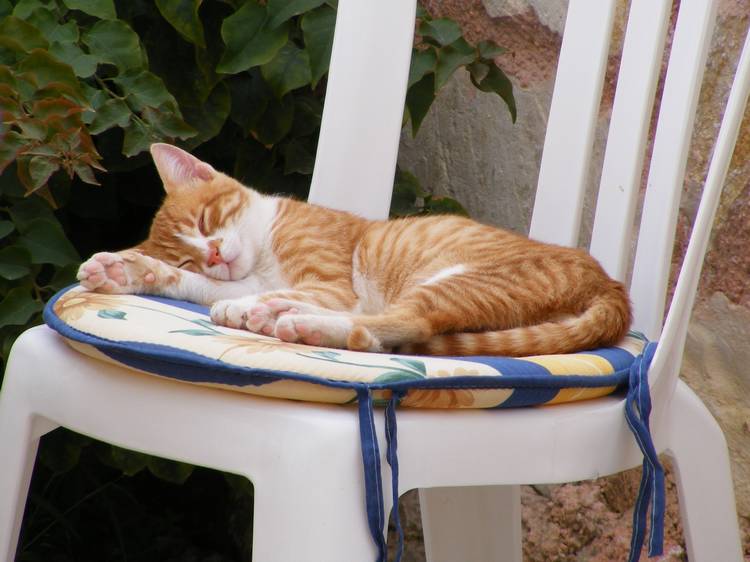
When living in Crete, it is easy to develop a relationship with the cats and dogs that run wild around the villages, towns and resorts. Holidaymakers will feed the cats resident on their villa complexes. Giving them the vigour and nourishment to promote their fertility. But when winter comes, the food supply dries up, and the kittens are born into a harsh world where food is scarce.
Living in Crete we have often had a few cats mooching around near our house, that live off the benevolence of holiday visitors in the summer, and all-year-round ex-pats. In the past, there was in particular a family of six kittens.
The question at the time was: to feed or not to feed?
We asked ourselves, should we let nature take it's course? This is very hard because we all have a strong impulse to help and protect creatures who are vulnerable, especially if they are cute and cuddly.
Feeding cats begins to turn into taking responsibility.
Taking responsibility is no light task. When you start feeding them, there is no end to it because they come to depend on you. Taking responsibility can involve more than just feeding. A vigorous non-neutered cat will reproduce and bring more mouths to feed. Neutering a cat can cost €250.00! More cost is incurred if you opt to have the flea, worm and vaccination treatments recommended.
From that original litter of six, only three survived.
Two simply stopped coming with the rest of the crowd, and we harbour the belief that they had been found by a little girl who always wanted a kitten to cuddle by the fire, or gone to live on a farm where a friendly farmer's wife feeds them on seasoned chopped chicken livers and scrambled eggs.
Victor!
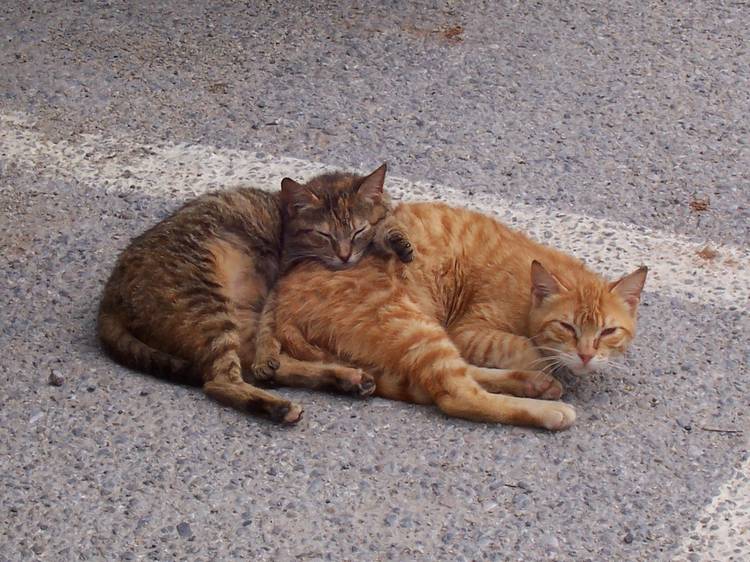 Victor (right) with his sister
Victor (right) with his sisterIt can be quite sad and upsetting living with semi-domesticated cats. It was sad for both of us when one of the kittens, Victor, died. he was our favourite of the litter. He passed suddenly, under a bush in our garden. We don't know why. When one dies in front of you it's very sad.
I took him and buried him under an olive tree we could see from our kitchen window. He was a lovely friendly handsome kitten, the biggest and strongest of the whole bunch. We saw the children of our neighbours feed Victor and his siblings all summer long. But Victor succumbed to something, and his passing was very sudden. We missed him.
Although we no longer live in that particular villa, I always remember when I washing the dishes in an evening, looking over at the olive groves from the kitchen window, I often fancied I sometimes saw a little ginger kitten, chasing butterflies in the long grass amongst the yellow flowers, under the ancient olive tree.
I hope you have enjoyed our all about cats in Crete guide!
Want to discover even more of what Crete has to offer?
Explore hidden gems, must-visit spots, and insider tips below!
Just Some of the Reasons We Love Crete
Did you love this page? Please share it with your friends!
© Copyright All Original Content 2006 - 2025 Completely-Crete.com. All
Rights Reserved. Reproduction in whole or in part without permission is
not permitted.
Click here to learn about developing your own money-generating website
from Solo Build It! - even with little or no web experience!
